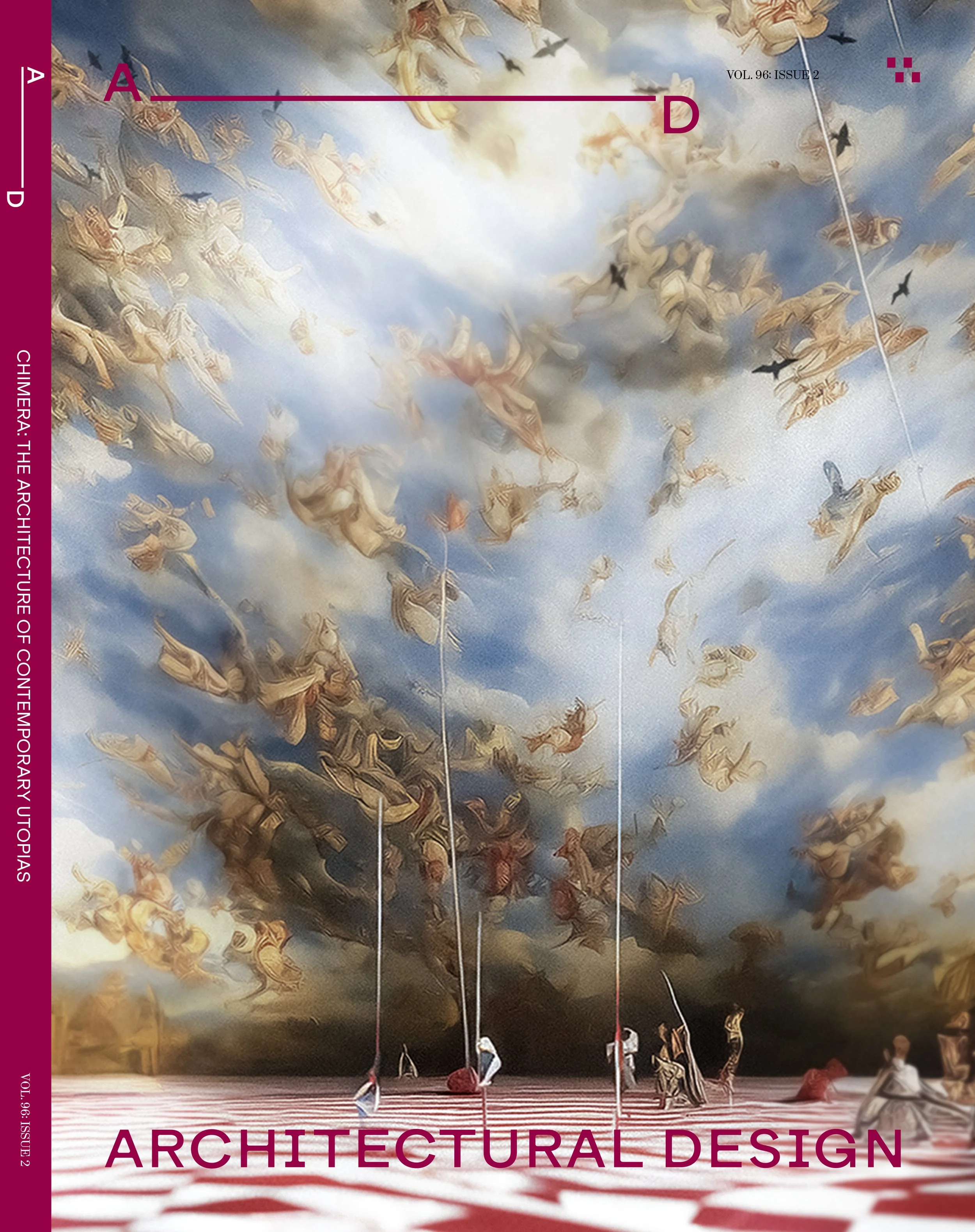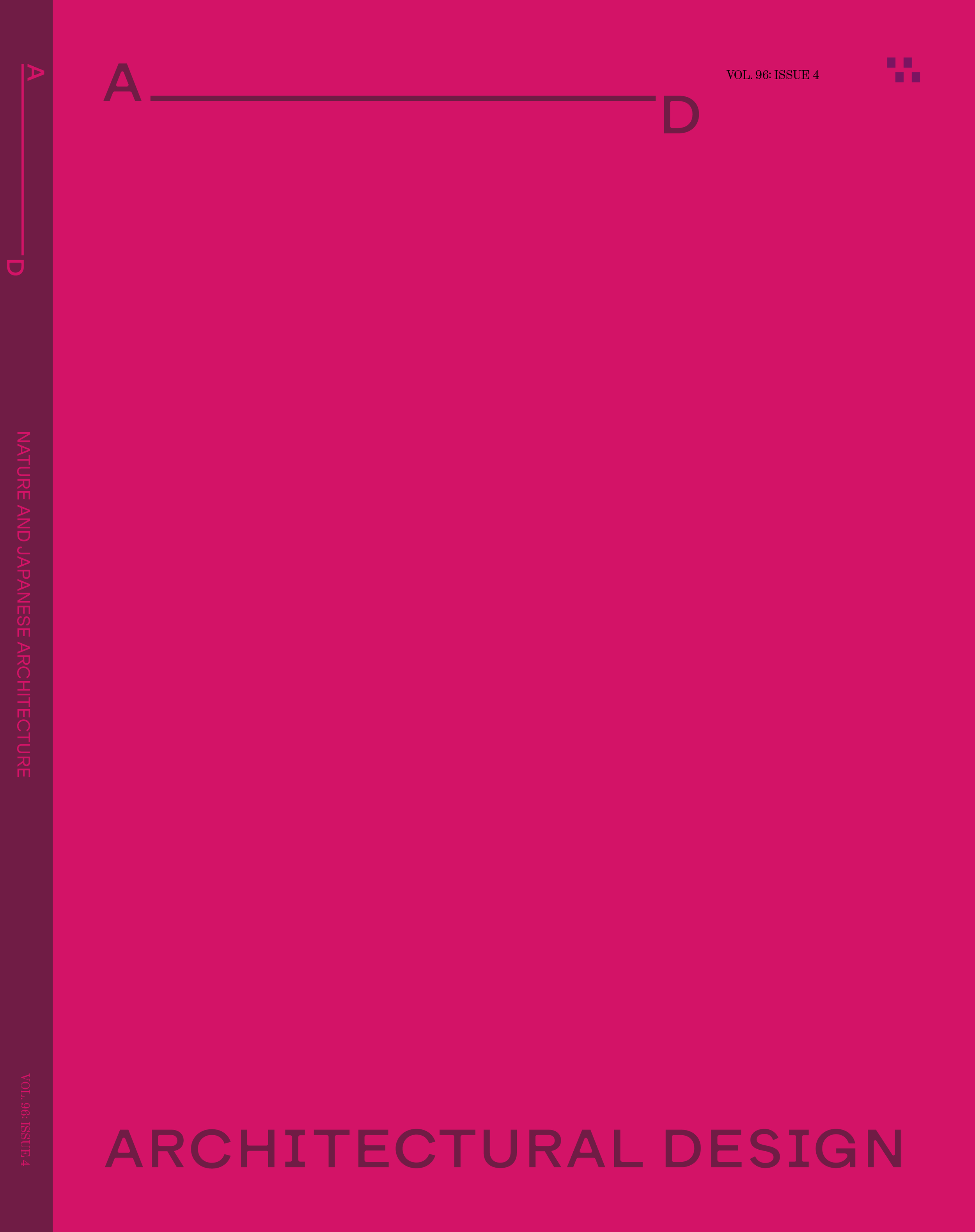 Image 1 of 2
Image 1 of 2

 Image 2 of 2
Image 2 of 2



PREORDER VOL 96.2 Chimera: The Architecture of Contemporary Utopias
Guest-edited by Elena Manferdini and Damjan Jovanovic
Are utopias still necessary—and if so, for whom?
Fifty years ago, architects imagined worlds to come. Today, many have ceded the future to market logic, treating global capitalism as inevitable and reality as fixed. In this climate—where techno‑optimism competes with ecological despair—it seems easier to picture the end of everything than the transformation of anything. The system endures because it convinces us that change itself is impossible.
This issue of AD intervenes precisely there. It argues that when collective imagination falters, the utopian impulse returns—not as a blueprint for perfection, but as a means of reopening what can still be conceived and made. As planetary computation, climate instability, and synthetic cognition converge, utopia becomes a tool for speculative world‑building: a way to design new systems, meanings, and realities.
Contributors navigate this shifting terrain—from those who embrace technological acceleration as an instrument of renewal to others who call for a metaphysical architecture that resists exhausted capitalist logics. Across these positions, utopia emerges as an operative framework for projecting alternative futures. Here, architecture’s task is not merely to shape space, but to construct worlds capacious enough to hold complexity—and to sustain coexistence amidst crisis.
CONTRIBUTORS
Adil Bokhari, Federico Campagna, Robert Cha, Jennifer Chen, John Cooper and Krish Dittmer, Graham Harman, Damjan Jovanovic, Neil Leach, Elena Manferdini, Alina Nazmeeva, Antoine Picon, Carlo Ratti and Marco Santambrogio, Paulette Singley, Neil Spiller, Andrew Witt, and Natasha Wanganeen and Liam Young
FEATURED ARCHITECTS AND DESIGNERS
Archigram, Atelier Manferdini, AtkinsRéalis, Aaron Betsky, Carlo Ratti Associati, Certain Measures, Delugan Meissl Associated Architects, Diller Scofidio + Renfro, Peter Eisenman and Michael Graves, Norman Foster + Partners with Porsche, Rem Koolhaas, Elia Zenghelis, Madelon Vriesendorp and Zoe Zenghelis, Lifeforms.io, METEORA (ETH Zürich), Davide Oldani, Jack Oliva-Rendler, Robert Cha Architect, Studio Nawa, Superstudio, and Rain Wu
Guest-edited by Elena Manferdini and Damjan Jovanovic
Are utopias still necessary—and if so, for whom?
Fifty years ago, architects imagined worlds to come. Today, many have ceded the future to market logic, treating global capitalism as inevitable and reality as fixed. In this climate—where techno‑optimism competes with ecological despair—it seems easier to picture the end of everything than the transformation of anything. The system endures because it convinces us that change itself is impossible.
This issue of AD intervenes precisely there. It argues that when collective imagination falters, the utopian impulse returns—not as a blueprint for perfection, but as a means of reopening what can still be conceived and made. As planetary computation, climate instability, and synthetic cognition converge, utopia becomes a tool for speculative world‑building: a way to design new systems, meanings, and realities.
Contributors navigate this shifting terrain—from those who embrace technological acceleration as an instrument of renewal to others who call for a metaphysical architecture that resists exhausted capitalist logics. Across these positions, utopia emerges as an operative framework for projecting alternative futures. Here, architecture’s task is not merely to shape space, but to construct worlds capacious enough to hold complexity—and to sustain coexistence amidst crisis.
CONTRIBUTORS
Adil Bokhari, Federico Campagna, Robert Cha, Jennifer Chen, John Cooper and Krish Dittmer, Graham Harman, Damjan Jovanovic, Neil Leach, Elena Manferdini, Alina Nazmeeva, Antoine Picon, Carlo Ratti and Marco Santambrogio, Paulette Singley, Neil Spiller, Andrew Witt, and Natasha Wanganeen and Liam Young
FEATURED ARCHITECTS AND DESIGNERS
Archigram, Atelier Manferdini, AtkinsRéalis, Aaron Betsky, Carlo Ratti Associati, Certain Measures, Delugan Meissl Associated Architects, Diller Scofidio + Renfro, Peter Eisenman and Michael Graves, Norman Foster + Partners with Porsche, Rem Koolhaas, Elia Zenghelis, Madelon Vriesendorp and Zoe Zenghelis, Lifeforms.io, METEORA (ETH Zürich), Davide Oldani, Jack Oliva-Rendler, Robert Cha Architect, Studio Nawa, Superstudio, and Rain Wu








